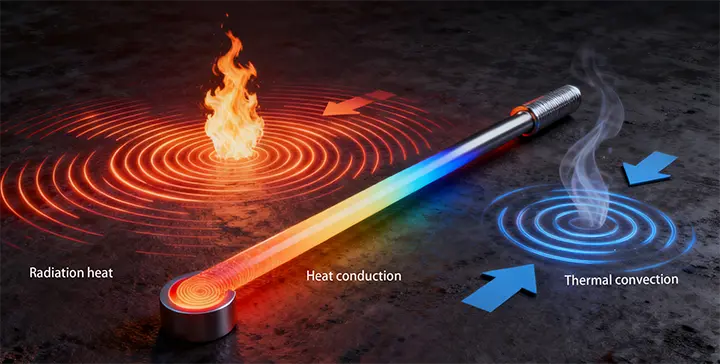
At its core, insulation is about slowing down heat loss, which happens in three main ways: radiation, conduction, and convection. Insulating materials work by creating a barrier that extends the time it takes for energy to escape. Regarding Y-Warm and traditional materials, here is how they differ:
1. Different Approach to Reducing Conduction
(1) Polyester fiberfill or down creates an intricate, 3D web-like structure filled with air pockets when lofted. This structure effectively traps air in countless tiny pockets, limiting its ability to circulate. By maximizing loft and thickness, this system increases the amount of still air, which in turn reduces heat conduction.
(2) Y-Warm functions on the principle of physical isolation. In just a 1mm thickness, it creates over 10,000 independent, micron-scale cells per square centimeter. These cells are in a semi-vacuum state, which results in an extremely low thermal conductivity that effectively minimizes heat conduction.
2. Different Method for Mitigating Convection
(1) Encased in a tightly-woven fabric, polyester fiberfill or down creates a puffy, three-dimensional body of air. Convection is primarily prevented by two factors: the tightness of the outer fabric and the overall thickness of the fill.
(2) Y-Warm works differently: it doesn’t depend on stored air. Rather, its own continuous, dense, micron-scale pores are closed off, forming countless isolated air pockets. This structure makes it impossible for air to move between them, which completely eliminates convection.
3. Different Strategy for Managing Radiation
(1) Upon receiving thermal radiation, the air stored in polyester fiberfill or down initially absorbs thermal radiation. Following this absorption, the material’s thickness then acts as a barrier, reducing heat conduction.
(2) Y-Warm features a unique porous structure composed of a solid matrix. The walls of its pores have a thickness of 20-280 nanometers and an emissivity exceeding 0.9. Its specific heat capacity is approximately 170 kJ/(kg·°C). These inherent characteristics give the material itself a powerful ability to block thermal radiation.
4. Impact of Compression
(1) For polyester fiberfill and down, loft is a key indicator of insulation performance. When compressed (resulting in reduced loft), the air layer diminishes and conductive pathways increase, causing a significant degradation in thermal performance.
(2) As a solid porous material, Y-Warm exhibits strong overall compressive strength. After being subjected to heavy pressure, its pores are capable of rapid recovery and restoration as the pressure is released.
Summary and Analysis:
Polyester fiberfill and down operate on a “macroscopic” insulation principle. Their performance is intrinsically linked to factors such as fiber diameter, curvature, and arrangement; down content and thickness; and the tightness of the woven shell fabric. In contrast, Y-Warm utilizes a “microscopic” insulation-through-isolation principle. Its thermal insulation performance is directly determined by its closed-cell ratio, porosity, and pore volume.

